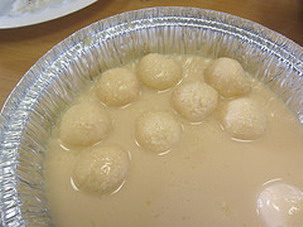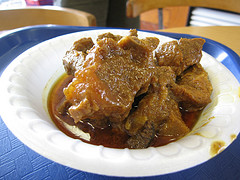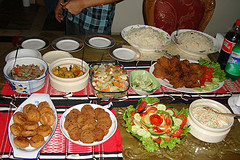
There are several regional variations, in terms of dishes, cooking style and serving style in Bangladesh.
* South: Barisal Division., Chittagong Division and Khulna Division, being close to the sea, tend to have a larger use of sea fishes in their cuisines in addition to coconut milk. “Shutki”, which is a dry fish, is extremely popular in thses areas.
* Dhaka: This city exhibits a great deal of western influence in its cuisine. Dishes involving fried rice and a lot of meat are usually legacies of Dhaka’s past as the capital of Bengali empires. Much of this can still be seen in the old city, where dishes like biriyani, mughlai porota and bakorkhani are made is speciality stores, many of which have existed for over a century.
* West and North-West: Vegetable curries heavily occupy the main eating in these areas. Also, spices are more commonly, and more heavily used. River fishes (sweet water fishes) are common in the dishes.
* North-East: Large number of lakes around the Sylhet Division encourages greater use of lake fishes in the cuisine. Because of the proximity to the hills in Assam, several fruits and pickles that are otherwise that are not seen in therest of the country, such as “satkhora” are used in cooking and serving, giving a distict taste to the dining menu here.
Read Full Post »





